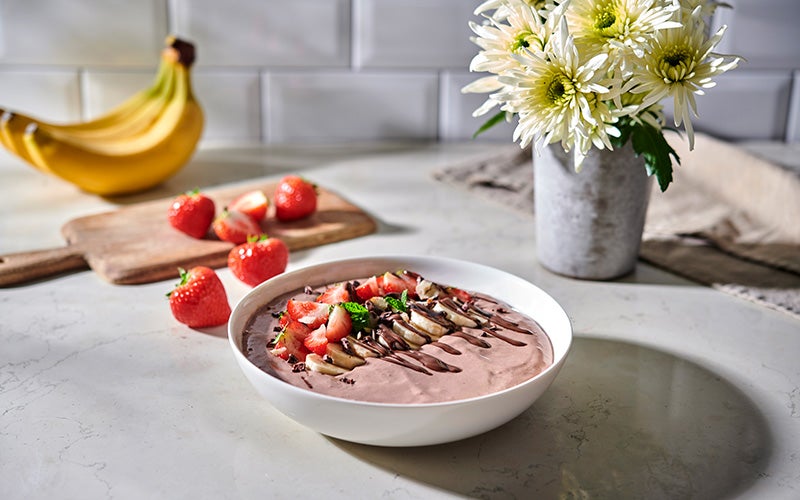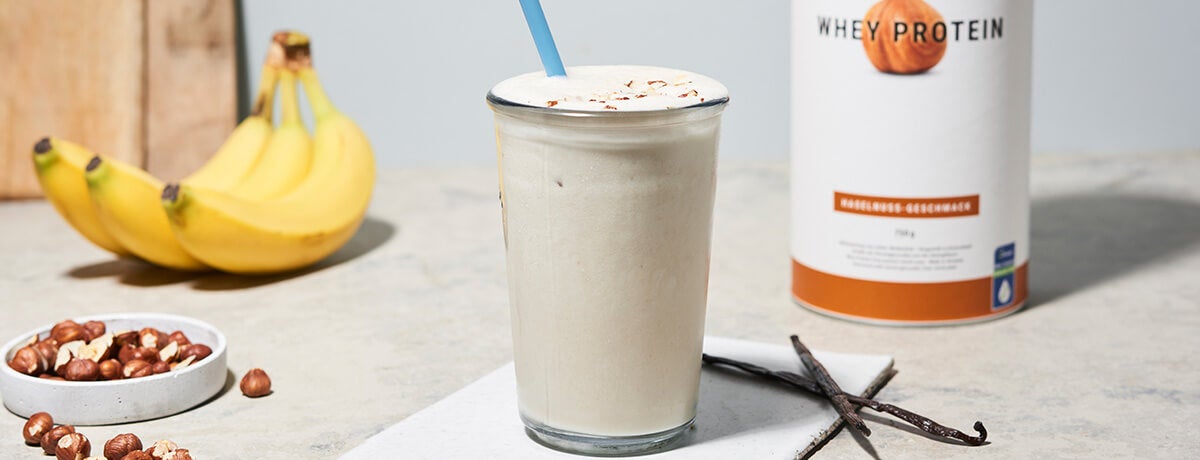Nutrition Diary: Here’s how you do it for best results!
 ©foodspring
©foodspring
Conscious reflection on your own eating habits can help to change dietary habits long-term. When it comes to achieving a physical target like muscle building or weight loss, the key to success lies in the right nutrition. If the amount of calories consumed or the ratio of individual nutrients are not right for the physical target, success is unlikely to follow.
This is where the nutrition diary comes into play, your personal record of your eating habits. Keeping a nutrition diary can be useful for anyone who wants to seriously work on their eating patterns and will need to do a bit of “troubleshooting” first. A nutrition diary can also help put a nutrition plan into action.
Our nutrition diary PDF template allows you to create a custom nutrition diary and gain control over your eating habits. The 7-day nutrition log PDF monitors your eating behavior for 7 days. Simply send it to us when you are done and we will evaluate it for you free of charge.
Our Tip:
The right nutrition is everything for weight loss as well as muscle building. We recommend you start with our free Body Check as your first step. Calculate your BMI and get tailored workout and product tips to hit your own goals.
How to Keep a Nutrition Diary
Note down EVERY meal you have over the course of 7 days in the nutrition diary. Be honest with yourself and write down every meal, snack and drink you have. Leaving out anything or cheating won’t do you any favours and will distort the overall results.
In order to create a valid overall picture, you should ideally also note the portion size of each meal (e.g. 100g brown rice or 150ml orange juice). Only then can the total amount of calories including the ratio of nutrients be determined correctly.
We recommend using kitchen scales for best accuracy.
The format of the nutrition diary is entirely up to you. Keeping the diary in the form of a table is the most obvious choice – either in the traditional manner with pen and paper, or on your tablet or laptop.
The Benefits of a Nutrition Diary
The key ideas here are self-reflection and logging. Only you can know exactly what you eat daily and how much. Being absolutely honest with yourself is the key to creating a nutrition diary.
The findings from the diary are important in determining the status quo of your current diet in order to propose changes. The key benefits of a food diary:
- Reflection of your own eating habits
- Determining the status quo of your current diet
Structure of a Nutrition Diary
A nutrition diary doesn’t need to be complicated. Its purpose is to answer key questions about your eating habits at a glance:
- What do I eat?
- When do I eat?
- How many meals do I eat?
- How much energy (calories) do I consume?
Answering these questions help you find the right approach to structuring your nutrition diary. You can, however, expand your diary by including more detailed information (e.g. motivation for eating: emotional satisfaction, craving, etc.).
To start, it is enough to focus on the total amount of calories consumed each day. This will allow you to come to some initial conclusions about your current physical situation in the context of your eating habits.
Nutrition Diary for Weight Loss
One of the dangers of losing weight/reducing body fat is permanently eating below the basal metabolic rate. Your body requires the basal metabolic rate to maintain vital processes like breathing, organ function and the cardiovascular system. Your body will go into energy-saving mode if you eat at or below the basal metabolic rate over an extended period of time. When in that state, the body will not give up any body fat, as “protects” the organs with a warm, protective coat. When in energy-saving mode, the body will break down water and muscle mass only.
That is why it is particularly important that a weight loss nutrition plan is structured around the basis of a healthy supply of calories. The nutrition diary can help you to think about the total amount of calories you consume and prevent your body from going into energy-saving mode.
Click here for our shape products
Tip: Proteins play a key role in weight loss. They leave the body feeling fuller for longer and the protein building blocks protect the muscles from degradation caused by a calorie deficit. Proteins should therefore be given priority in a diet. A whey protein like our Shape Shake supplies your body with the high-quality protein that it needs during a weight loss diet. Use our Shape Shake as a meal supplement to maintain a healthy calorie deficit with a sufficient intake of protein.
The Nutrition Diary as a starting point for the perfect nutrition plan
So, you’ve successfully kept a nutrition diary and made some initial reflections on your eating habits? Great, you’ve taken the first step. The next step is to use the results you’ve collected in your nutrition diary to create an appropriate nutrition plan for your physical goal. We will show you how to create your own nutrition plan step by step.

Download our free pdf template
You can also have your nutrition diary evaluated by our expert team of nutritionists. Just email your nutrition log to service@foodspring.co.uk and we will give you tips and recommendations based on your current nutritional situation.
Sources for this article
We at foodspring use only high-quality sources, including peer-reviewed studies, to support the facts within our articles. Read our editorial policy to learn more about how we fact-check and keep our content accurate, reliable, and trustworthy.






















